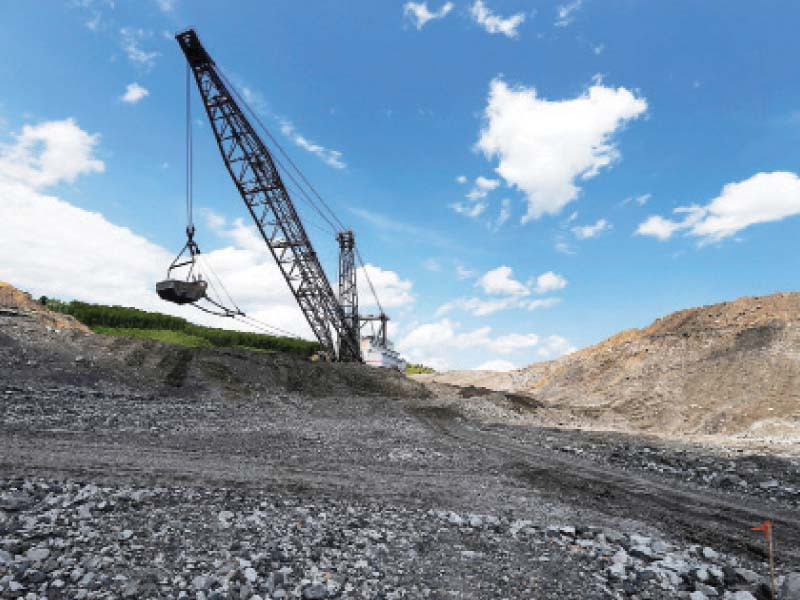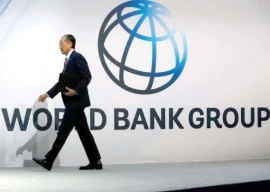
Coal is a primary energy source. It is not a choice but a requirement for Pakistan as it serves as the backbone of the economy. Therefore, the country must utilise the indigenous coal resources for long-term energy security, suggested
energy experts.
The country at this moment is in dire need of producing cheap electricity that can be achieved by harnessing the hydel or coal generation potential.
Currently, the coal-fired projects are using imported coal, which adds to the burden on the national exchequer, however, the diversion from the imported to the locally produced coal can solve the issue,
they said.
“Keeping in view Pakistan’s population and urbanisation growth rate, the country will need a lot of additional energy by 2030. It needs to speed up the exploitation of coal resources to meet the demand in order to become self-sufficient in energy,” an expert told The Express Tribune.
The Pakistan Muslim League-Nawaz (PML-N) government during its previous tenure initiated coal-fired power projects to tackle the energy crisis, however, they were being criticised for using imported coal.
The then PML-N government, under the China-Pakistan Economic Corridor (CPEC) project, also issued licences to a couple of companies, namely Sindh Engro Coal Mining Company (SECMC) and Sino-Sindh Resources (SSR) to initiate the process of utilising the local coal reserves in Thar to generate cheap electricity via mine mouth power plants.
However, the current PML-N led coalition government is once again looking to import coal from Afghanistan, neglecting the huge reserves in Thar, which are now in operational mode.
SECMC has so far extracted 11 million tons of coal to generate 10.5 million units (KWh) of electricity, which saved $700 million of government’s spending per annum.
On the other hand, SSR mine is expected to become operational and start power generation by August 2022.
The project is expected to generate 1.3 gigawatts by the end of December 2022 as the mine will expand from 3.8 million tons per annum (mtpa) to 7.6 mtpa.
Moreover, the government of Sindh has decided to start a project to transport Thar coal to the upcountry to fuel all the coal-fired power projects and a 105km railway track will be operational soon to connect Thar coal fields, the New Chhor Halt Station and the Mirpurkhas-Khokhrapar section.
“Pakistan can make the best of the coal reserves in Thar, which are about 175 billion tons. They can provide power to the country for the next 30 years at least,” said EFU Life Insurance Research Head Ali Ather.
He said around 30% of the primary energy needs were met with coal all over the world by generating 40%
of electricity.
Every year 1,000 million tons of lignite (low-grade) coal is mined globally. According to the US Energy Information Administration (EIA), the US has long-lasting coal reserves for up to 190 years, while the rest of the world has recoverable reserves for 300 years.
“Even if it is considered non-renewable, it is unlikely that there will be shortage of coal any time soon. This is why the use of coal technology for power generation is decreasing but not dying in the civilised world,” said Ather.
Furthermore, every year approximately 80% of the total energy used globally is generated from fossil fuels for being relatively cheap.
“Most of the coal found in Pakistan is lignite and the country has coal resources in all its four provinces but more than 95% are in Sindh (in Thar).”
“Revenue generation for economic development is greater with indigenous coal and the development of infrastructure with indigenous coal is faster,”
he said.
“This will also lead to a reduction in the demand for imported fuel, which drains out the foreign exchange resources. It will also ensure uninterrupted energy supplies and will protect the national economy from the effects of international oil price fluctuations,”
Ather commented.
Published in The Express Tribune, July 7th, 2022.
Like Business on Facebook, follow @TribuneBiz on Twitter to stay informed and join in the conversation.

1732013245-0/now-you-see-me-(1)1732013245-0-405x300.webp)
1730959638-0/trump-(19)1730959638-0-165x106.webp)















COMMENTS
Comments are moderated and generally will be posted if they are on-topic and not abusive.
For more information, please see our Comments FAQ